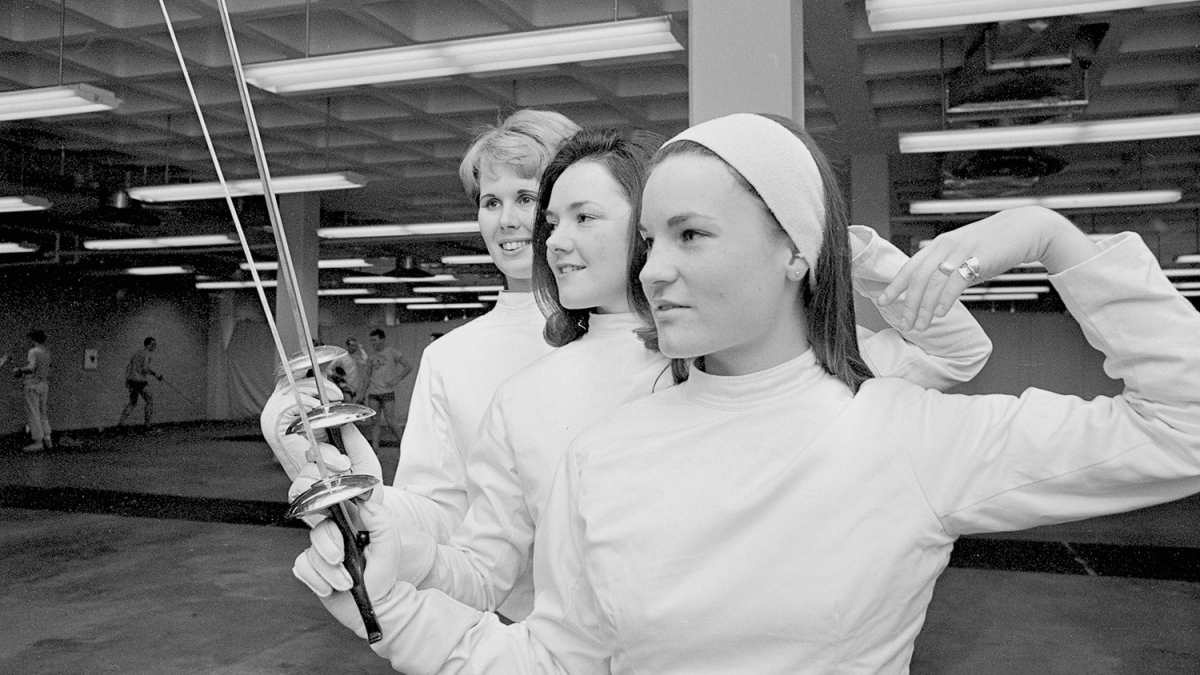Sixty years ago, there were no women on NC State’s athletic teams. Although the first women joined the marching band in 1946 and the cheerleading team in 1955, the first competitive sports in which women participated were fencing and rifle shooting.
In 1965, Diane Ramsey joined the varsity fencing program, and Alma Wilmington and Pam Lias joined NC State’s rifle team as NC State’s first female student-athletes.
Kat Charron, an associate professor of history, researches the U.S. in the 20th century and women’s and gender history. Charron said the timing of these women joining the teams was unusual because college activism and federal law were not largely focused on women’s rights yet.
Charron said the women’s liberalization movement emerged at the end of the sixties out of the Civil Rights Movement, with some women forming separate feminist organizations.
“The timing of women students at NC State doesn’t quite fit with where we would think that would begin to happen, which would most assuredly be after 1972 and the passage of Title IX, which prohibited sex discrimination in sports, and other things,” Charron said.
Diane Ramsey, now 79, recalled why she joined the fencing team in 1965.
“When I was in college, some of the courses that you had to take were mandatory and physical education was one,” Ramsey said. “And fencing was available, and I thought that could be interesting. And so I chose it as an elective for one of the courses that I needed.”
NC State’s physical education department began offering women-only physical education classes three years before Ramsey joined the team.
Ramsey said the coach of her fencing class was Ron Weaver, who was also the coach of NC State’s fencing club. Weaver was a former member of the U.S. Olympic team, in which he competed with the sabre in 1956 and as a coach in 1960.
Once Weaver invited her to join the team, Ramsey said she practiced with the men’s fencing team to get a wider experience in fencing and competed against women from other universities.
Using her experience from the team, Weaver placed third in the State women’s championship and second in the Amateur Fencers League of America.
Tim Peeler, a University communications strategist, said women could only compete as individuals before Title IX.
Ramsey said she didn’t think anything of training with men.
“I just looked at it as a person, and I needed to practice,” Ramsey said. “And I just accepted it. That was the way I was brought up. I’m not gonna run around and say I can’t do that because that’s a boy.”
The same year Ramsey joined the fencing club, Alma Williams and Pam Lias joined the NC State rifle team.
Newspaper articles from the 1960s said Williams had been a marksman since the age of eight and later taught the sport in summer camps.
In a 1966 article from The Raleigh Times, Williams was quoted saying, “My whole family is interested in shooting. All my brothers and sisters shot at camp like I did and daddy and my brothers hunt a lot.”
Lias had been shooting for two years before trying out for NC State’s rifle team. Lias said in a 1968 News & Observer article that her cousin got her interested in shooting and she later enrolled in her hometown High Point’s YMCA sharp-shooting classes.
A 1967 News & Observer article about the at-the-time five women on men’s athletic teams mentions that the swimmer Susie Resseguie was not allowed to compete on the men’s swimming team due to an Atlantic Coast Conference regulation in which only males could compete in ACC-sponsored sports.
“Alma Williams and Pam Lias turned [NC State Rifle] into a coeducational team,” Peeler said. “They were able to get around the ACC only allowing male athletes because rifle was never an ACC sport.”
Unlike fencing, the women in riflery were able to take part in team competitions. Sgt. Tom Shafer, coach of the rifle team at the time, said Alma finished the season fourth on the team.
There were a few challenges for the women on the rifle team at the time, as they reported that even the smallest uniforms were still a little too big for them. Sharing the dressing room also got rather tense.
“I scream and they run,” Williams said in the 1968 newspaper article.
Williams said despite being one of the first women on the team, she felt welcome by her male teammates.
“The boys on the team treat me real nice,” Williams said in the 1966 article. “It’s different for both of us — they’re used to shooting with all boys; I’m used to shooting with all girls. But they seem to be proud of me when I do good.”













